
Should a Fifth Grader get through a single book in one year? (hint: nope.) How can I use this curriculum most effectively with my student? Susan Wise Bauer and grammar teacher and author Jessica Otto answer questions about the Grammar for the Well-Trained Mind curriculum and provide a helpful chart for teachers and parents.
Transcript, with a link to our chart showing one way to break these books into basic, intermediate, and advanced grammar chunks for your student:
Susan: I’m Susan Wise Bauer. I’m the author of our grammar series, Grammar for the Well-trained Mind, which we designed as a complete grammar course for middle and high school students. And I’m with Jessica Otto, my friend and colleague, who teaches grammar at the Well-Trained Mind Academy and uses these books.
We want to talk to you about how far you can get in a year. We get a lot of calls from parents who are concerned because, particularly their middle school students are not finishing the workbook in a single year, and we are here to tell you that that is completely, perfectly normal. And, in fact, if you’re dealing with a middle school student, acceptable and preferable. The goal of this course is not for students to master grammar the first time through. It’s our assumption that they’re not going to master it the first time through. That’s why we’re ultimately going to have four workbooks, so that over the course of four, five, or six years, students will cover the material again and again and again in order to master it.
So, let’s look at a couple of different scenarios here. Number one, you’re working with a 5th or 6th grader. A 5th or 6th grader, I’m gonna say, might cover the first 40 lessons in the workbook and then might need to stop. And you might need to then go back and do those first 40 lessons again with another workbook, which has the same principle, same role, same examples but a different set of material. Those first 40 lessons for 5th and 6th graders are really the foundation of grammar.
If you’re working with an older student, 7th or 8th grade, then they might get further through the workbook in the course of the year, but I still wouldn’t necessarily expect them to complete the whole thing.
Jessica: No.
Susan: If you’re starting the series with a high school student, then I think you can push them a little bit more. You can push them to get at least closer to the end of the book. But even still you might not get through, say, those last six weeks, not the first time through. If you were starting with a 9th grader, you would definitely push to get through 30 weeks over the course of the semester. But then it would be perfectly fine to go back the next year, do a little bit of review, take your time working through those last six weeks, because they’re complicated and that could take students, you know… And you could spend a semester with a high school student really thoroughly doing those last six weeks. And then, go back to the beginning and start again with another workbook. At that point, the student’s gonna go through the first weeks much, much more quickly, so you’re gonna find that you’re able to adjust the pace to the student’s mastery. This is pretty much the pattern that we follow at the academy in your grammar classes.
Jessica: It is. The first class that I teach at the academy we call Basic Grammar and that course is a 16-week course. We spend all 16 weeks covering Lessons 1 through 40.
Susan: Yeah, it’s really the core of the grammar.
Jessica: It really is, starting with nouns and then building from there. But I find that most of those students, who go through those 40 lessons, end up going back and repeating them, so that they have a very solid understanding and foundation.
Susan: Yeah, you really need to think of the books as chunks, you know, chunks that need to be mastered, but each chunk is going to take repetition to master it. So it’s not the kind of thing that you always have to do from beginning to end. It’s not like a math book, you know, where you’ve really got to get through the end before you can go on to the next grade.
Jessica: And then, I begin with Lesson 41 and that would be a middle school student, maybe upper middle school.
Susan: More like 7th or 8th grade.
Jessica: At least, yeah. And that student would spend a great deal of time out. We would spend at least 16 weeks or more going from Lesson 41 up to about Lesson 80. And that’s as far as we could go.
Susan: Yes, that’s right. And this is because, by the way, that’s when you get into dependent clauses, and dependent clauses are the hardest thing about the English language.
Jessica: They are.
Susan: You’ve really gotta master the difference between a dependent clause and an independent clause and what dependent clauses do before you can move on.
Jessica: Yeah. When I teach clauses to my students, in fact, I describe it as going from learning basic addition and subtraction into learning algebra. It’s just a completely different way for your mind to think. And that part especially, we need to slow down. We need to do a lot of repetition so that they can understand a brand new concept.
Susan: Right. And so, students repeat that as well often?
Jessica: They do.
Susan: They don’t go straight from that into the advanced class?
Jessica: Absolutely. Only about 10% of my students could go through Lessons 41 through 80 one time. The vast majority of them need to go back and repeat it at least once and some of them twice and the feedback I’ve received is that it helps them immensely.
Susan: And, of course, when we get to the advanced level, we’re talking about stuff that a lot of students never get even in college in terms of how the English language works. We’re working with unusual constructions, like absolutes. I know that we dive in, for example, sentences from Dostoevsky where he breaks rules, but he breaks rules in a really rule-based way. And so that’s what we’re doing with advanced grammar. That’s really like calculus almost.
Jessica: It is. It is. And they’re having to use a lot of critical thinking in that level. So, with my advanced students, we rarely get to the end of the book. But we just take our time so that we can really understand how the different aspects of the sentence are working together.
Susan: I really wish parents could think of this grammar learning. So, my youngest child is a dancer. I wish he could think of it like ballet. You spend a lot of time in those beginning classes doing pliés and you do them over and over and over again, because if you don’t get the pliés right, then you can’t really move on. And you wouldn’t consider the year a failure if you never get up on point the first year. You go back the next year and you do more pliés and you do more floor exercises and then you go up on point. But when you first go up on point, you don’t stay up there very long. So, it’s really like that sort of that skill building where you’ve really gotta get the basics down before you can move on to more advanced material.
Jessica: Yeah.
Susan: Yeah. Now, we do actually have a chart online which shows you some different ways that you can use these books, stretching them out over a number of years, repeating the first 40 lessons, then repeating the first 40 lessons again, some of the things we’ve talked about here, and then also some of the ways that Jess uses the books in her academy class.
Just some different options that will free you from the burden of feeling like you’ve got to do one book per year, because that’s not the way it’s gonna work. Just a few things to keep in mind as you’re looking at the chart and making your plan for the year. Week does not have to mean a literal week. That for us is shorthand. If you’re doing grammar every single day and it’s really the center of your language arts program, even so you’re only doing four days a week. You can do a week in two weeks. You can do a week in less than a week and then repeat it again. Don’t get hung up on the word “week.”
Remember that this program is usable for grades 5 through 12, which means that your 5th grader and your 12th grader are not going to go at the same pace. As I look back through the books, I really sort of, I don’t know, figure maybe 8th grade as the first year, when I think a student might be able to complete the whole book over the course over the year, but that’s not gonna be all students. It’s gonna depend on their aptitude, the way they handle language, the way they learn, and how much they’ve had before. So, definitely, with 5th, 6th, and 7th graders, just take the idea of finishing the book off the table completely and adjust to your program.
Remember that the material gets much more rigorous towards the end. Remember to repeat as often as needed, but if the student has mastered the material, you don’t have to repeat it. So, let’s say you’ve got a 7th grader and you complete the book over the course of two years. Let’s say you do one workbook over the course of two years. You turn to the next workbook. You don’t have to ask the student to go back underlining simple subjects and simple predicates as we do in the first lessons. Have the student do the first three sentences. If they’re familiar with the material, they’re like, “Oh, yeah, I know that.” Have them do the first three sentences in the exercise. If they get them all right, skip the rest of it and move on. So, you don’t have to do every sentence in every lesson, particularly when you’re going back and repeating the lower levels over again. Really target your repetition towards mastery. If it’s mastered, you don’t have to repeat it. It’s always going to go more quickly in the earlier weeks and it will always go more quickly if the student has covered the material once.
So, just take all of those factors, put them into your mind as you plan out your program. Think of this as a whole, like, smorgasbord laid out in front of you, but you don’t have to eat the whole thing in one sitting. You can choose how quickly to go through the courses.
Recommended Products
-
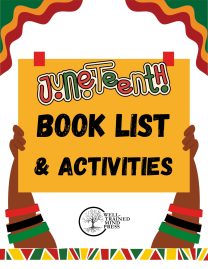
Juneteenth Booklist & Activities
0 out of 5$0.00 Add to cart -
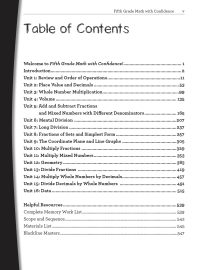
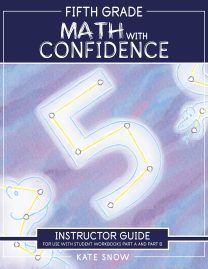
Fifth Grade Math with Confidence Instructor Guide
0 out of 5Starting at:$36.95Original price was: $36.95.$27.71Current price is: $27.71. Select options -
Sale!

Hansel & Gretel and Other Stories: Downloadable MP3
0 out of 5$12.95Original price was: $12.95.$8.42Current price is: $8.42. Add to cart -
Sale!

Dorothy and the Wizard in Oz: Downloadable MP3
0 out of 5$25.95Original price was: $25.95.$16.87Current price is: $16.87. Add to cart -
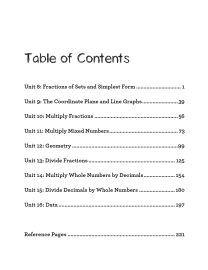 Sale!
Sale!
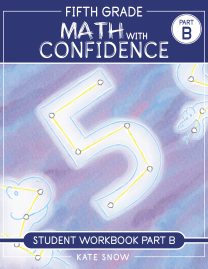
Fifth Grade Math with Confidence Student Workbook B
0 out of 5$16.46 – $21.56 Select options This product has multiple variants. The options may be chosen on the product page -
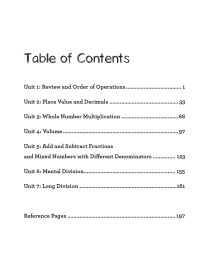 Sale!
Sale!
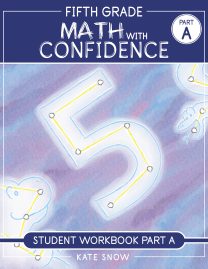
Fifth Grade Math with Confidence Student Workbook A
0 out of 5$16.46 – $21.56 Select options This product has multiple variants. The options may be chosen on the product page
ABOUT THE AUTHOR
Susan Wise Bauer
Join over 100,000 homeschooling families
For the latest offers, educational insights, products and more.
By joining you agree to our privacy policy.







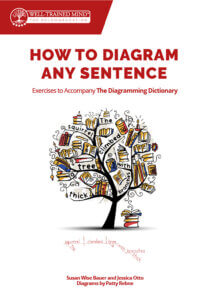
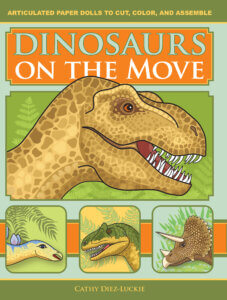




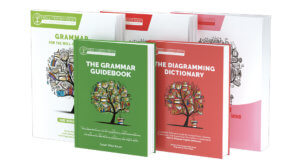


10 thoughts on “How to Use Grammar for the Well-Trained Mind with Your Student”
Wow, I wish I would have seen this before I started homeschooling my children this year. My seventh grader has shed so many tears trying to get through the complex lessons that reach farther even than what I learned in advanced grammar in college. I really wish the books were separated into different levels more like what Jessica suggests or similar to the First Language Lessons. We’ve tried so hard to stick with the weekly schedule printed in the front of the book, and ultimately grammar is the dreaded part of the day for my son. I have a hard time determining whether the lesson actually takes him hours or if he is just dreading the doing of the exercises for much of that time.
How long do you recommend a child spend on grammar per day with this curriculum?
Because mastery is the goal and the program is meant to adapt to the student, there’s not really a set amount of time per day. It is set up for 36 weeks, with four lessons per week. To quote Susan Wise Bauer, “Take as long as you want. If a lesson gets long, finish it the next day. If a lesson goes really quickly, you could do two.” That quote is from Teaching Tips for GftWTM, which has some excellent tips on the learning process.
I’m curious to know how you would recommend using this with a small co-op class of students, say four students, who meet for an hour once a week. What would you suggest doing in that hour and what would you send home for them to do at home? The majority of the students have ADHD and over half the parents would say that Grammar is their weak point.
Hi Jennifer! We’re checking with the specialists and we’ll get back to you soon with an answer!
OK, we spoke with the people-who-know, and they told us that it would be best to follow the pattern used by our own “Well-Trained Mind Academy” in their Grammar I class. They split GFTWTM up into 2 years, and the first year only covers lessons 1-40. Here is the syllabus from that class so you can see the subjects they cover each week. They do the lesson in class, then do a few of the practice sentences together, with some of the remaining exercises (or all) assigned as homework.
https://docs.google.com/document/d/1GTuWEnN7c8mJjf1eS4XBCqpDc0ySgYL4n9GBZqwpDrQ/edit
We just finished First Language Lessons FTWTM Level 4 – is Grammar FTWTM where we go next? Is there a level 5? I love how it includes poems and more than just grammar.
“Grammar for the Well-Trained Mind” would be the next level to use. However, it’s a pretty rigorous program, so you may need to move slowly through it, especially with a younger child (like a fifth grader). We sometimes recommend only doing half of the book per year with a fifth grader. There are more explanations below the chart in this article: https://support.welltrainedmind.com/hc/en-us/articles/360011380674-Where-to-start-in-all-Language-Arts
I’m sorry to say this. Two years into this program, and it’s just not working. It zaps all the fun out of learning and we dread having to do it.
We’re so sorry to hear this! That’s the opposite of the effect we want. No one curriculum is a good fit for every student; if this one is causing you dread, please switch to one of the many other good curricula out there. Some of them are mentioned/listed in “The Well-Trained Mind.”